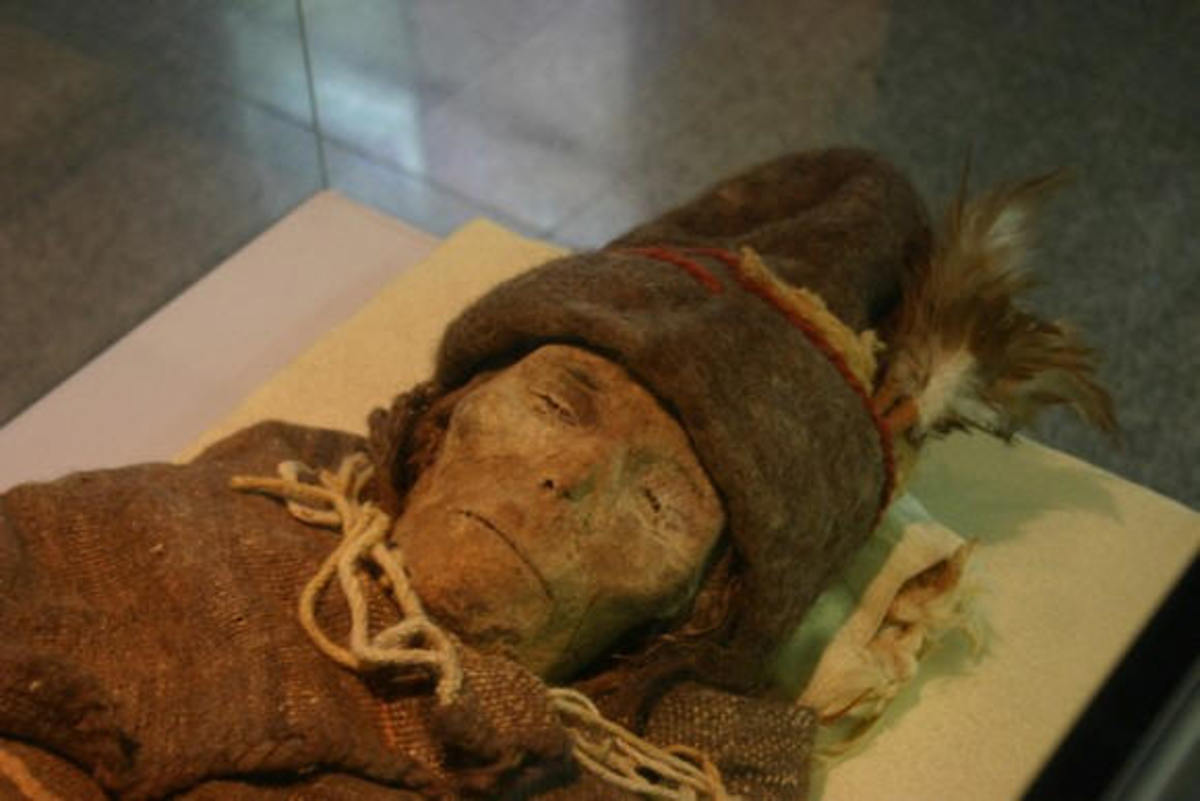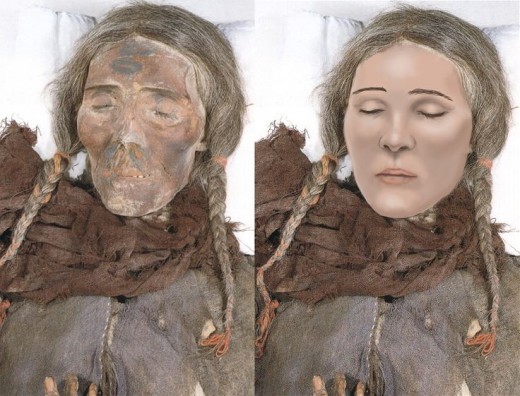://usercontent1.hubstatic.com/13409314_f520.jpg
4,000 Year Old Lost Tribe
One of the most fantastic finds in the last half of the twentieth century has to be the discovery of a Northern European tribe found in the northeast corner of Xinjiang province, near the Celestial Mountains and the Taklimakan Desert on the edge of the Gobi desert.
The story starts in 1978 when the Chinese archaeologist, Wang Binghus, started searching for ancient sites. He began by following stream beds, and asking the locals if they had ever come across any broken pots and artifacts. He eventually came across a few people who pointed out that there was a place called Qizilchoqa, or, as the local people called it, Red hill. Here he made the most amazing discovery, the first of the mummies. It had been placed in a grave on the side of the hill.
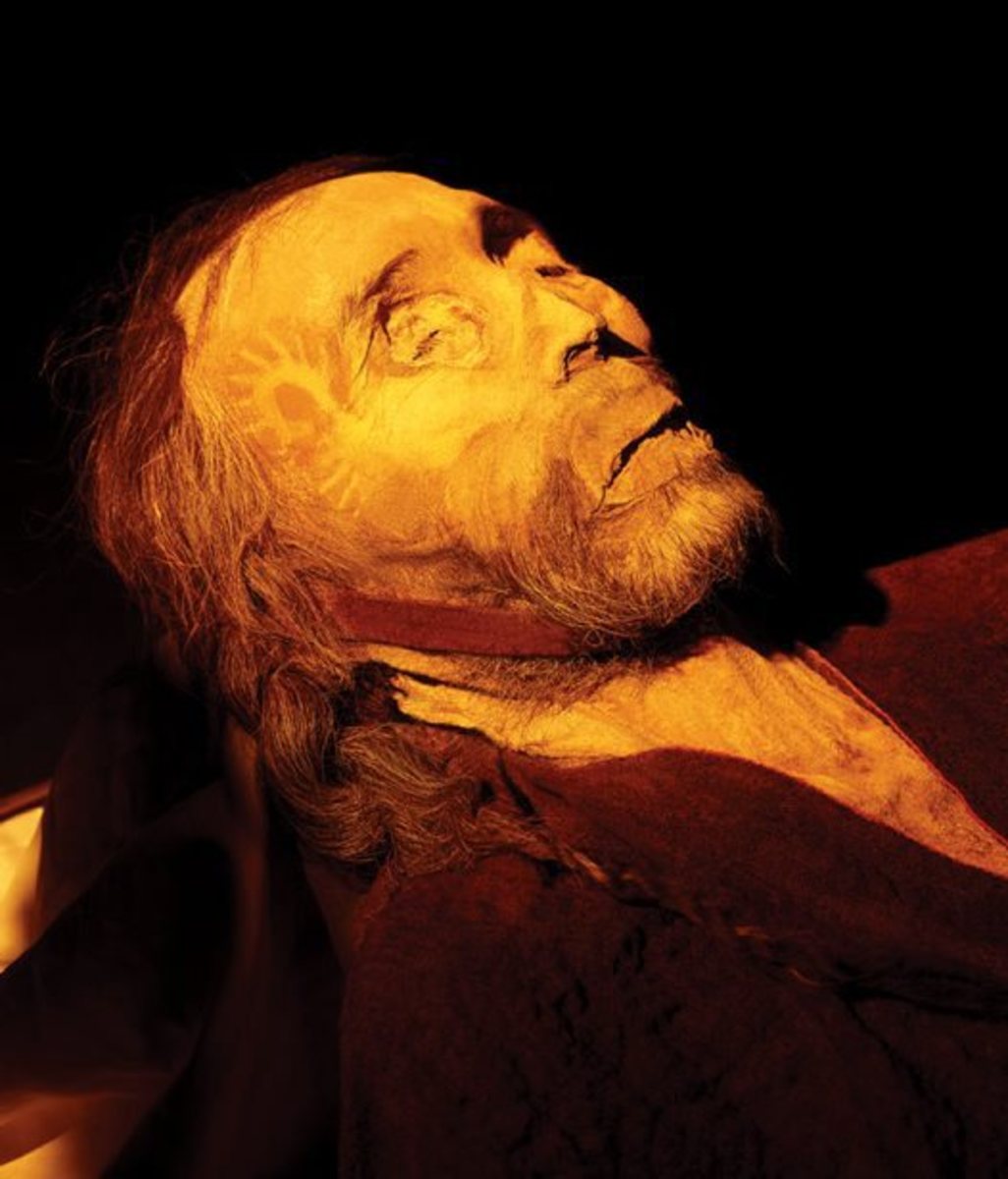
It was a simple site, rush mats were on the floor, and some of the bodies were buried in the foetal position. In effect, the mummies were not what you would call real mummies, in the sense that they were not embalmed. They had been preserved in an amazing way. They had been placed in the ground, which had been subjected to a unique weather system. Heat, aridity, and bitter winter cold, mixed with a salty soil, had preserved them better than other mummies found around the world. Even the clothing was still perfectly recognizable.
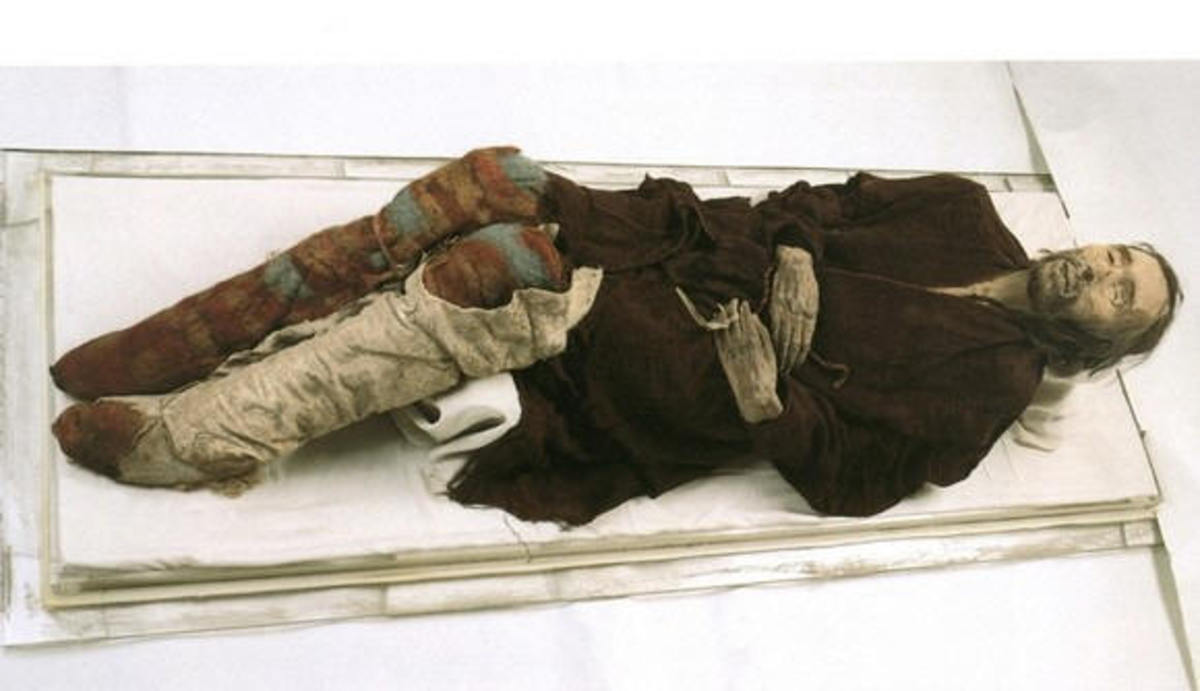
The bodies were excavated and taken to the museum in the city of Urumqi. There were 113 bodies taken from the site. At the time the Chinese government did not have enough funds to excavate the find. Wang eventually discovered three more burial sites.
The faces of the mummies were very well preserved, so, on closer examination, they could see that they were not Chinese. They had blonde hair, big eyes, and European noses.
At that time, Chinese tradition had always shown the fact that they believed China had developed independently from the rest of the world. Because of this, the government was reluctant to bring the finds to the public attention.
But soon they realized that the proof was irrefutable.

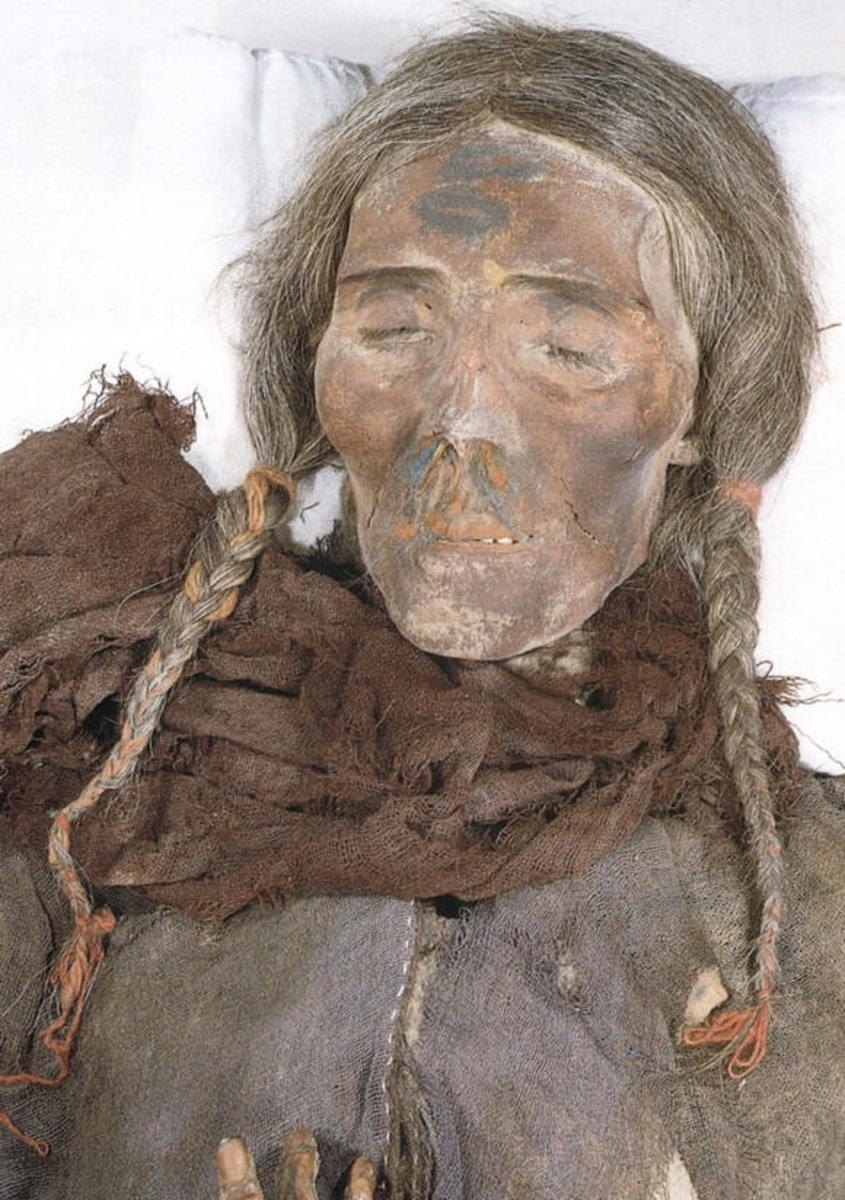
The Mummies of China
The most extraordinary thing about the mummies was the fact that their clothes were in such good condition. A jacket belonging to one man, over three thousand years old, still had a crimson edge. And the women had artificial extensions in their hair.
This tribe was obviously very advanced for its day. On one of the mummies, there is a scar which shows they had rudimentary operating skills. It had been sown up with horses hair.
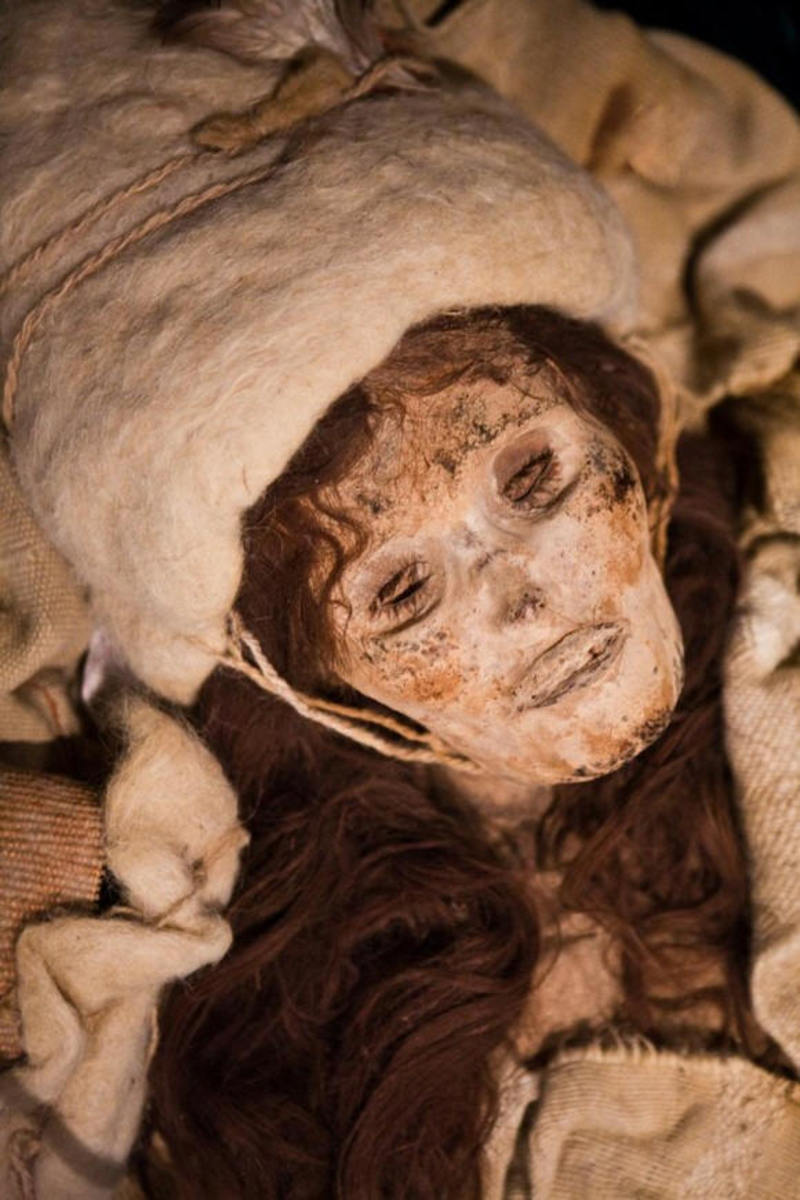
When the West was eventually allowed to visit the mummies, Dr. Victor Mair, who was a Professor of Chinese at Pennsylvania University, took a tour around the museum. Imagine his surprise when he saw these amazing mummies, which had been kept in a dark room, in glass-topped boxes.
At this time, the Chinese authorities were still a bit reluctant to let anybody know about them, so it has taken quite a long time for the West to be able to study them properly.
Eventually in 1993, they were allowed back with a team of geneticists from Italy. And this is when they began to study them properly. They used the most up to date technology of the time to confirm the date of the mummies. They now believe that they are about 4,000 years old, and the youngest about 2,000. There are probably many more to be found, possibly in the same region of China, but it is also possible they could have settled anywhere in China, as long as the conditions were suitable to live in.
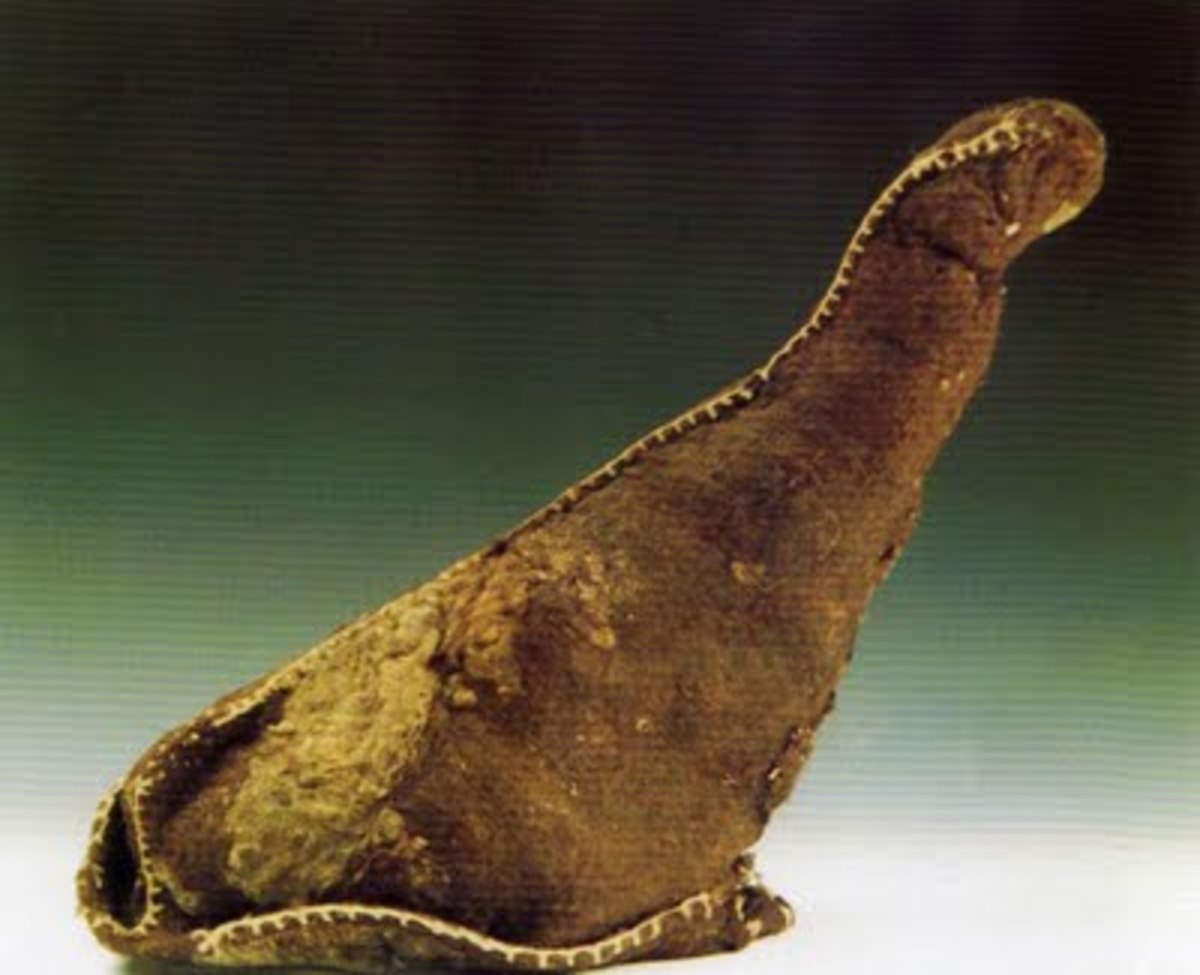
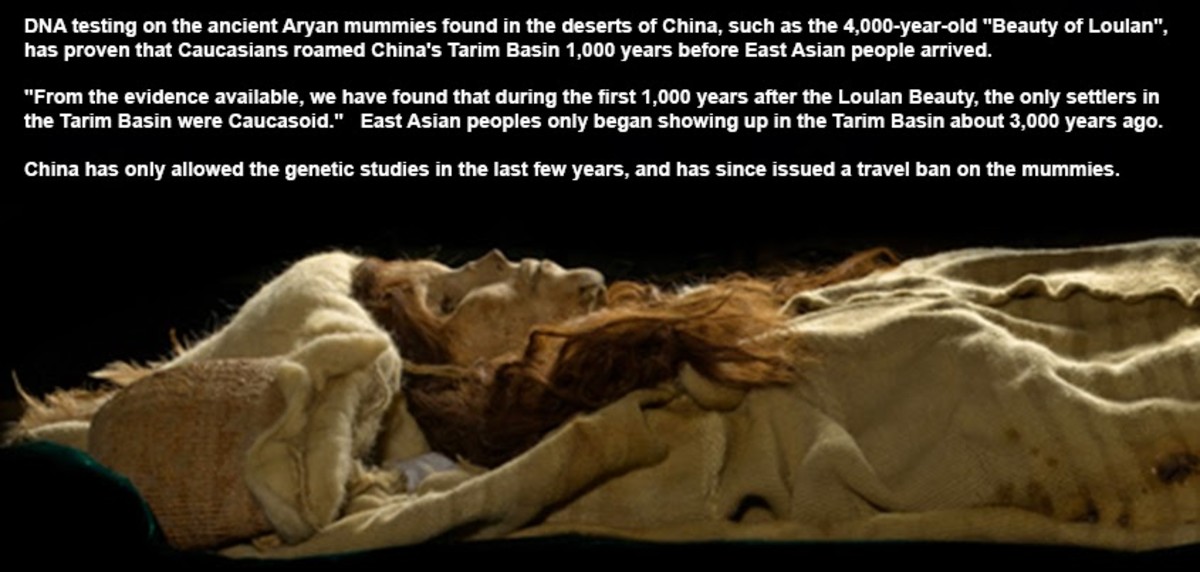
These people were from the Bronze age, they were Caucasian, and it is possible that they interacted with the indigenous people at that time. The local people probably taught them their traditions, and the Caucasians most likely introduced them to their way of life as well.
There were two cartwheels found at the burial sites, very similar to what you might find in Russia, or nearby countries. These amazing people were probably Scandinavian or German; it is amazing to think that they trekked across China all the way from Europe, 4,000 years ago, taking their traditions and language with them. How many other tribes were there? Who knows?
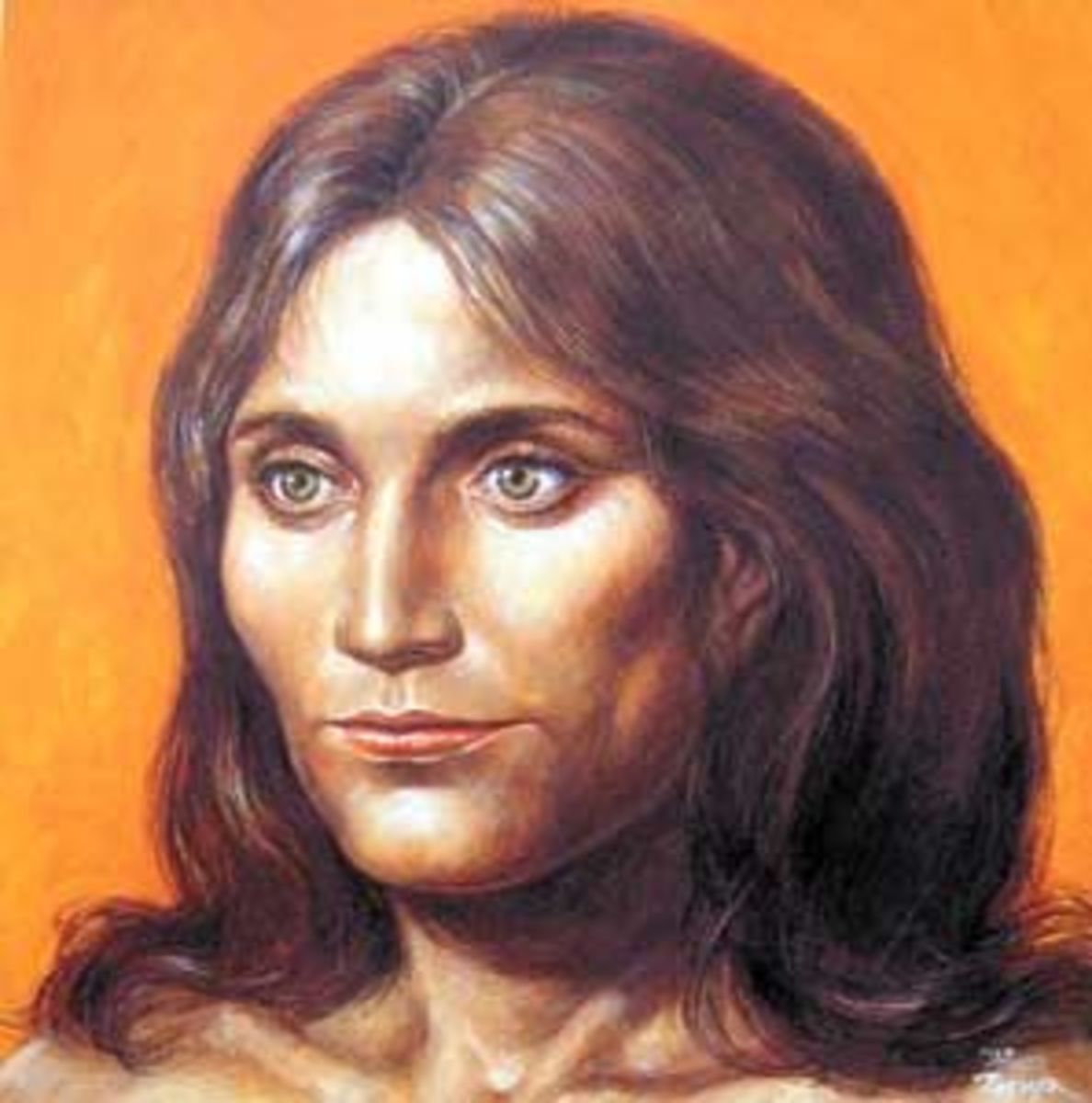
I think that one of the most fascinating things about this story is that the local people, even today, that live in the area where the bodies were found speak a language called Tocharian, the most eastern branch of Indo-European.
This language is closely related to German and Celtic. I think the other most amazing thing about these people is that they walked all the way across China, taking with them their families, and a mixture of animals, probably goats and sheep.
Feeling the cold, and the heat, catching diseases that they didn't know anything about, unsure whether they would survive the different climate. Babies were born, people died, and all the time not knowing whether they would be safe or if the indigenous people would accept them.
Their lust for adventure and discovering new places gave them strength and determination to survive. They were amazing people, and I hope that soon we will be able to see these wonderful discoveries and learn more about these courageous human beings that came from the beginning of history.
